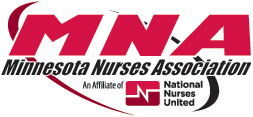Lives are at risk when nurses are required to care for too many patients at one time. That’s not just what nurses say—it’s what the data proves.
Two studies involving over 600,000 patients in New York and Illinois examined how nurse workloads affect patient outcomes and hospital finances. The results were staggering:
- In New York, if hospitals followed the 4:1 patient-to-nurse ratio, they would have saved 4,370 lives and $720 million in just two years.
- In Illinois, staffing ratios could have prevented 1,595 deaths, and hospitals could have saved $117 million in just one year.
These savings came from shorter hospital stays and fewer readmissions—because patients get safer care with enough nurses.
Another study found that it is more cost-effective to invest in registered nurses rather than replacing them with less qualified staff, especially in places with low staffing and skills. Simply put, hiring more registered nurses in medical and surgical units can save money.
So why aren’t hospitals adopting safe staffing practices?
Because the decisions aren’t being made by people who understand patient care. Many hospital executives and board members have no clinical background. They’re applying business models to hospitals—cutting staffing to reduce short-term costs, such as payroll and operational expenses, without understanding the long-term consequences, including increased patient mortality, extended hospital stays, and higher readmission rates.
But patients aren’t balance sheets. And when nurses are stretched too thin, patients suffer.
Safe staffing doesn’t just protect patients—it also makes financial sense. It’s time to ask hospital administrators, responsible for managing the hospital’s operations and resources, why they are ignoring the evidence and the price patients pay for these decisions.
What You Can Do:
- Call your hospital and ask how they determine nurse staffing.
- Contact your legislator and tell them you support laws that require safe staffing ratios.
- Share your story if you or a loved one were affected by short staffing.
- Tell hospital CEOs to prioritize patient care over the bottom line
Lives—and millions of dollars—are on the line.
References
Lasater, K. B., Aiken, L. H., Sloane, D., French, R., Martin, B., Alexander, M., & McHugh, M. D. (2021). Patient outcomes and cost savings associated with hospital safe nurse staffing legislation: an observational study. BMJ open, 11(12), e052899. https://doi.org/10.1136/bmjopen-2021-052899
Lasater, K. B., Aiken, L. H., Sloane, D. M., French, R., Anusiewicz, C. V., Martin, B., Reneau, K., Alexander, M., & McHugh, M. D. (2021). Is Hospital Nurse Staffing Legislation in the Public’s Interest?: An Observational Study in New York State. Medical care, 59(5), 444–450. https://doi.org/10.1097/MLR.0000000000001519
Griffiths, P., Saville, C., Ball, J., Dall’Ora, C., Meredith, P., Turner, L., & Jones, J. (2023). Costs and cost-effectiveness of improved nurse staffing levels and skill mix in acute hospitals: A systematic review. International journal of nursing studies, 147, 104601. https://doi.org/10.1016/j.ijnurstu.2023.104601

